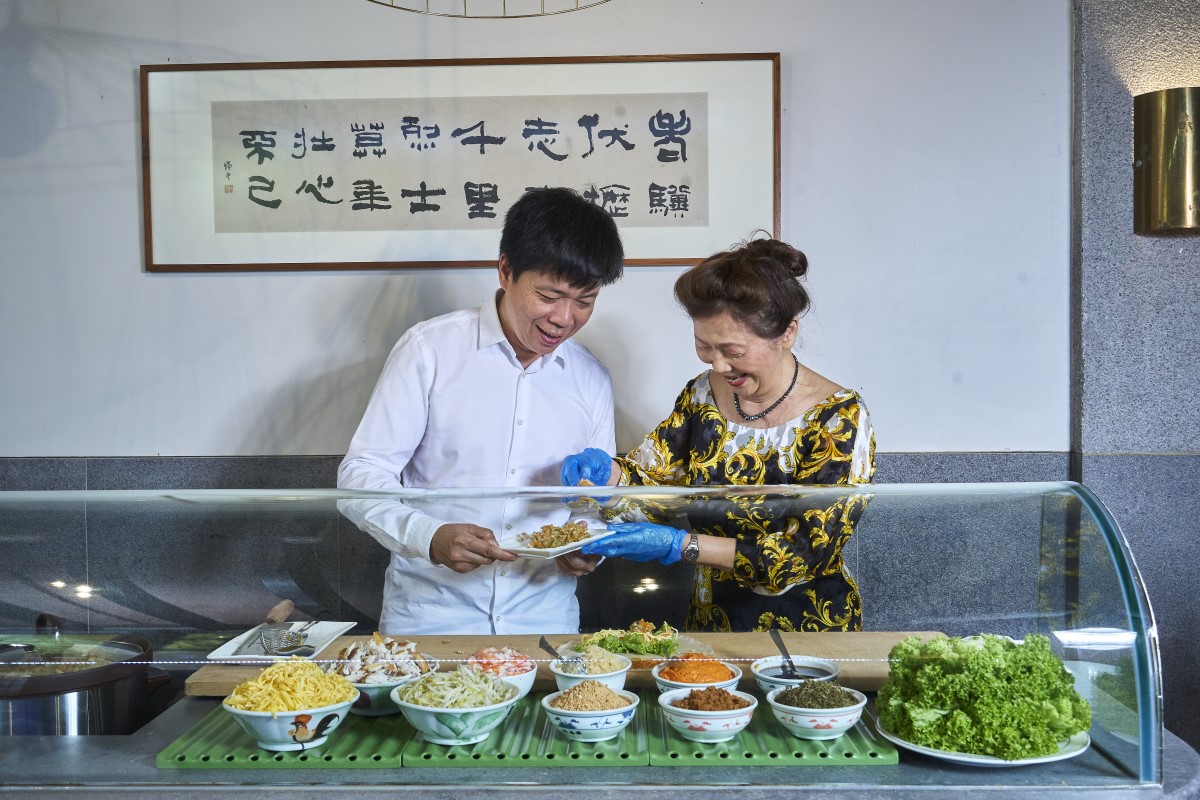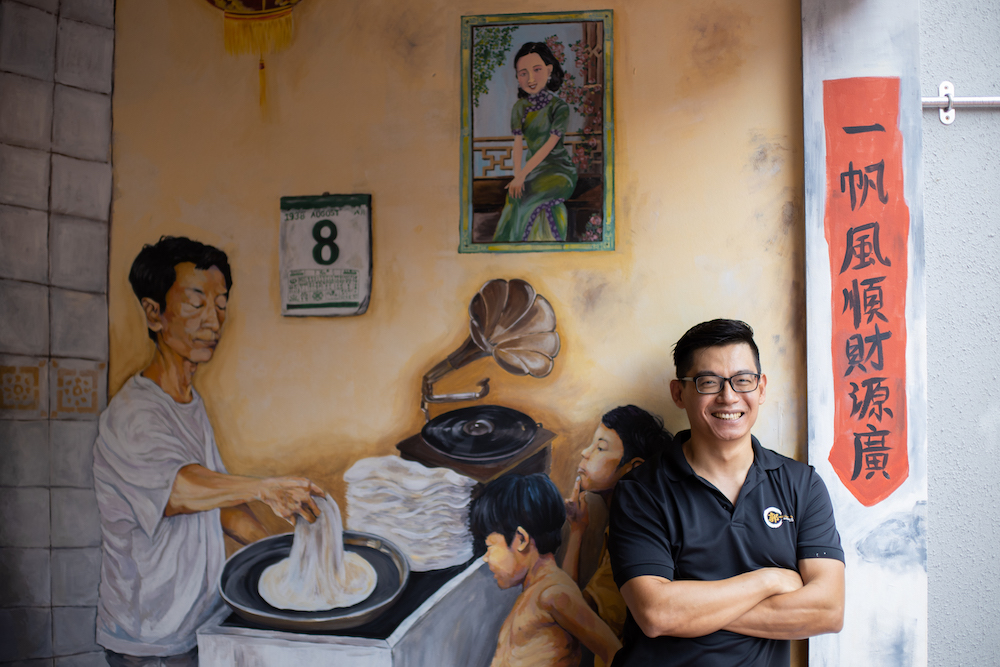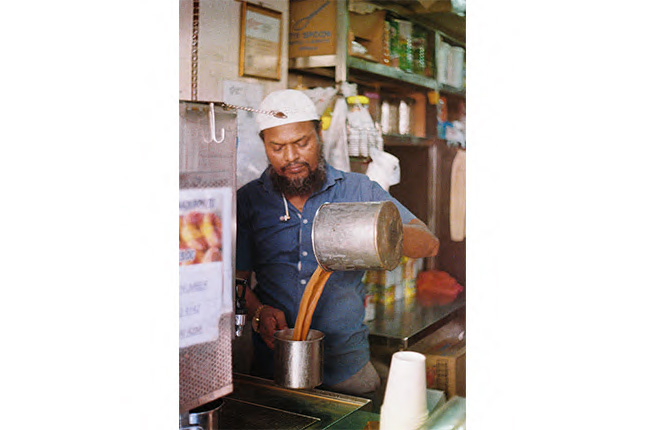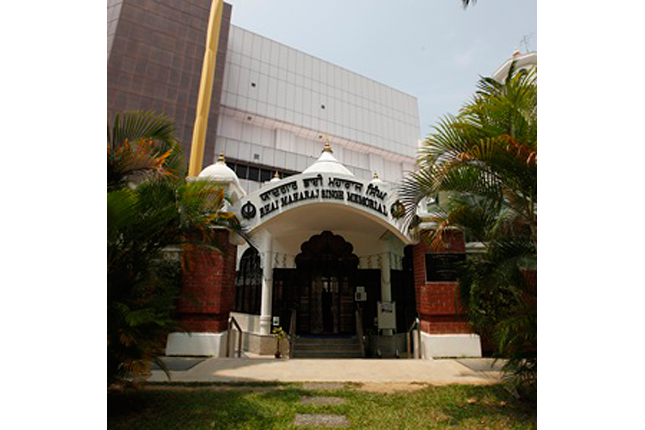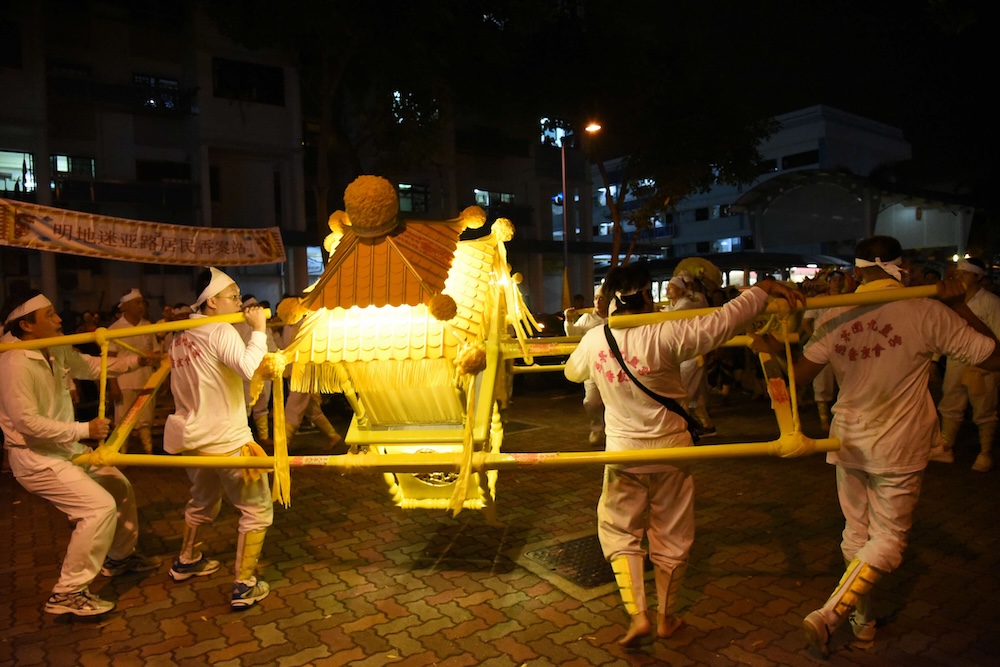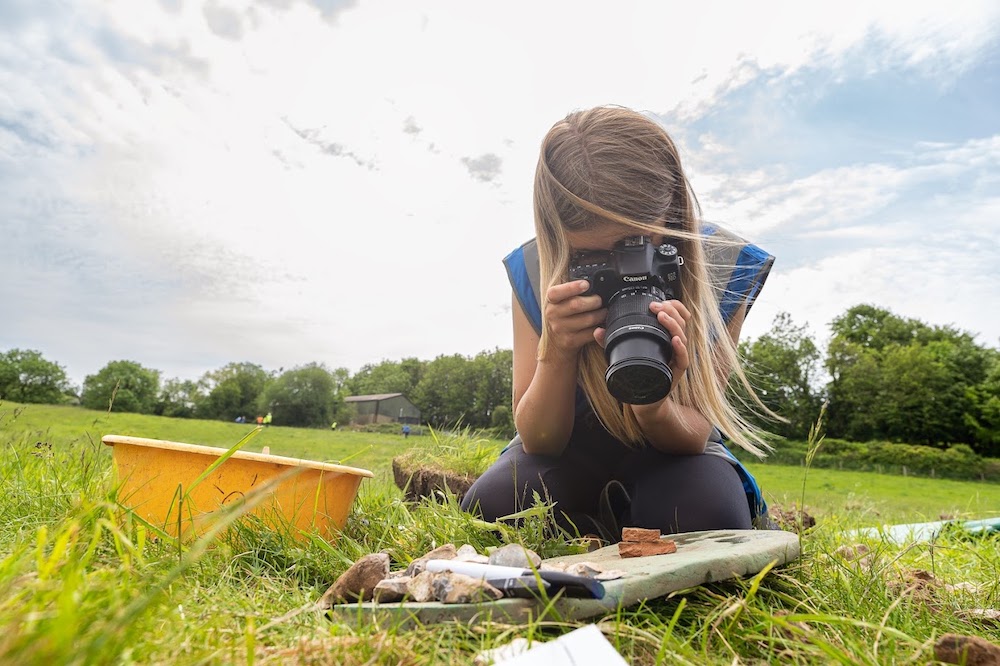Making and Sharing of Tea
The making and sharing of tea are an intrinsic part of Singapore’s social culture and food heritage. Different communities prepare and consume it in various ways, use it for a range of purposes from social setting to religious rituals. Tea is known by different names in Singapore, whether as teh in Malay, 茶 (cha) in Chinese or தேநீர் (theneer) in Tamil. Though it varies in name, form, and function, the six distinct types of tea that we know of : white, yellow, green, oolong, black and pu-erh, come from the same plant – the Camellia Sinesis, a small white-flowering plant, in order of increasing fermentation of the tea leaves. Tea has been present in the social culture and food heritage of many cultures across the world, with people adapting different methods with which tea can be brewed and consumed.
Geographic Location
The oldest known cultivation of tea dates to China in 3000BCE, and through trade and cultural exchanges, tea gradually spread to different parts of the world and gave rise to a diverse range of tea brewing and drinking practices. Owing to Singapore’s strategic geographical location as an important trading post, tea was imported into Singapore by the British from the early 1800s. Since then, Singapore has grown into a diverse cosmopolitan society, and it is possible to find an assortment of of teas from around the world in Singapore.
Communities Involved
People across various ethnic communities in Singapore participate in the making and sharing of tea. They prepare, consume and use tea for a variety of reasons ranging from personal consumption to social activities, to religious practices. The knowledge and skills related to the making and sharing of tea may be transmitted both formally between experts and apprentices and informally within families. Tea can easily be found across Singapore in a variety of places – traditional teahouses, hawker centres, coffeeshops1, restaurants, temples, and in the homes of many.
1Coffeeshops can refer to cafes, coffee houses or shops that sell coffee. In the context of Singapore, coffeeshops are also known as kopitiam and these outlets sell an array of food and beverages, outside of just specialising in coffee.
Associated Social and Cultural Practices
- Types of Tea commonly found in Singapore
- Nanyang Tea
The concept of Nanyang Tea refers to tea blended with two to three different types of tea leaves imported from Southern China. This concept is said to be historically derived from an inconsistent supply of tea leaves during certain seasons, and as such, teahouses began the practice of blending different tea leaves as a solution to mitigate the shortage of tea leaves required for brewing.
- Herbal Tea
Herbal tea is another popular version of tea that can be found in Singapore that can be made both at home and in specialised shops such as Koong Woh Tong. Herbal tea such as the 5-Flowered Tea (五花茶 or wu hua cha) and 24-Flavoured Tea (二十四味 or er shi si wei) is made with tea leaves and various Traditional Chinese Medicine (TCM) herbs and is believed to carry cooling properties ideal for a humid climate.
- Teh
Teh commonly found in hawker centres and coffeeshops is typically made using a traditional method in which a large metal cylinder filled with hot water and a sock in which tea leaves or teabags are mixed together. Teh comes in various forms and is customisable based on the customer’s order. Popular variations include: Teh (hot tea with condensed milk and sugar), Teh C (hot tea with evaporated milk and sugar), Teh O (hot tea without milk and with sugar), Teh O Kosong (hot tea without milk or sugar), Teh Siew Dai (hot tea with condensed milk and less sugar), Teh Peng (iced tea with condensed milk), Teh Ice Limau (iced lemon tea).
- Teh Tarik
Teh Tarik (pulled tea) was introduced to the region by Indian immigrants, and typically contains tea mixed with evaporated and condensed milk. The making of teh tarik requires a certain skill to pull the tea into the air to create a smooth and frothy texture. Teh Tarik is a very popular type of tea in Singapore, and is enjoyed by many Singaporeans, regardless of ethnic backgrounds. As such it can easily be found in hawker centres and coffeeshops across the country.
- Teh Halia
Teh halia is akin to teh tarik, with the only difference being the addition of ginger to give a sharper taste to the beverage.
- Masala Tea
Masala Tea or masala chai (spice tea) has its roots in the Indian subcontinent and is typically mixed with different spices such as cardamom, cinnamon, cloves, ginger, and mixed with milk. In Singapore, masala tea can be found at Indian restaurants and in homes – with each household having their own take to the blending of spices.
- Nanyang Tea
- Pairing Tea with Food
- Bak Kut Teh
Bak Kut Teh (meat bone tea) is a dish popular amongst the Hokkien and Teochew communities consisting of meat cooked in herbal soup. Many local restaurants use Nanyang Tea produced by local tea merchants such as Pek Sin Choon in the pairing of the dish.
- Thunder Tea Rice
Thunder tea rice, believed to have been started by the Hakka community, consists of at least 10 chopped vegetables prepared in a tea base. It typically consists of tea leaves, peanuts, sesame seeds, white pepper, mint leaves, basil, etc. grinded into fine powder and brewed.
- Bak Kut Teh
- Use in Rituals
- Chinese Weddings
Tea is used in traditional Chinese Weddings (roots.gov.sg) during the tea ceremony in Singapore. The first part of the tea ceremony takes place at the groom’s home. If deities and ancestors are worshipped at home, the couple will pray at the family altar before serving tea to the elders of the family as a mark or respect and gratitude. The couple will then leave for the bride’s house to hold a separate tea ceremony for the bride’s family. Thereafter, the couple will offer tea to each other in a ritual to symbolise mutual trust and goodwill. Tea is also typically served throughout the wedding banquet if it takes place at a Chinese restaurant.
- Chinese Temple Practices
The practice of offering tea, water, and wine plays a significant role in Taoist rituals. The order of offerings typically starts with tea placed at the front left of the altar, and in the typical quantities of either 3, 6, or 9.
- Qingming Festival
Qingming Festival falls between the 4th and 6th of April each year. During Qingming Festival, Chinese people visit cemeteries and columbaria to honour deceased family members at their graves or urns, as an expression of filial piety. Depending on the practices of different dialect groups, family members lay out offerings ranging from food, flowers, huat kueh (prosperity cake) and tea. Similar to practices in temples, tea is offered as a show of respect. After the worship rituals are complete, it is common for family members to clean up the offerings and pour out the tea in front of their ancestors' graves (or at an appropriate space within the columbaria). Despite the changes in burial practices, the act of offering and thereafter pouring tea at the columbaria remains an important tradition.
- Zhong Yuan Jie (Hungry Ghost Festival)
The Hungry Ghost Festival, also known as Zhong Yuan Jie, occurs annually on the 14th day of the seventh lunar month and is dedicated to remembering and honouring ancestors. The custom of offering tea during this festival is similar to that of Qingming Festival, albeit with some differences. Unlike Qingming Festival where rituals are carried out at cemeteries or columbaria, for Zhong Yuan Jie, ancestral worship is carried out in residential areas where family members often include tea leaves as one of the offerings to their ancestors.
- Mid-Autumn Festival
The Mid-Autumn Festival falls annually on the 15th day of the eighth lunar month. The Mid-Autumn Festival symbolises reunion and one of the highlights of this festival is the consumption of mooncakes, a must-have delicacy during this season. Tea is often paired with mooncakes during this festival, as it is believed to aid in digestion. People enjoy the pleasure of family reunions while savouring mooncakes and sipping tea, creating a moment of joy and unity.
- Chinese Weddings
- Social Practices
- Tea Art
Tea Art refers to the artistic conception of the entire tea drinking process which includes the appreciation of tea brewing and tasting techniques, as well as the drinking environment. The process reflects the unity of form and spirit, and is a social practice through which the basic understanding of tea leaves, water, brewing techniques, and etiquette are experienced and understood by the drinker.
- Hawker Culture
Hawker Culture (roots.gov.sg) was inscribed on the UNESCO Representative List of the Intangible Cultural Heritage of Humanity in 2021. Hawker centres is the hub of hawker culture and a focal point for social interaction between friends and family across the different communities. Tea – in its various styles and forms – can be readily found in hawker centres across Singapore.
Experience of Practitioners
Mr Kenry Peh – Pek Sin Choon Tea Merchants
At Pek Sin Choon Tea Merchants located at 36 Mosque Street in Chinatown, helmed by fourth generation owner Mr Kenry Peh, the traditional way of blending tea leaves in a large flat bamboo basket is still the method in use - a technique which has been passed down through generations. The Tea Blending Master (Master) meticulously selects tea leaves typically sourced from southern and northern Fujian, and thereafter places them layer by layer in a gradual process before gently massaging the tea leaves to produce a unique fragrance and texture. Following that, the Master mixes the layers gently to create a blend before roasting the tea leaves. Over time, the Master’s experience and knowledge of flavours enables him to create just the right blend in the mixing process. While Pek Sin Choon Tea Merchants is a wholesaler, Mr Peh also dedicates time to fostering understanding and appreciation of tea culture through talks, workshops, and creations where he continually searches for innovative ways to share knowledge and interest of the making and sharing of tea to enthusiasts and the general public. Some of Mr Peh's notable innovations to appeal to the younger generation and the wider community include the introduction of cold brew and carbonated teas, and the use of Nanyang tea as the base for Kombucha cultivation.
Mr Mohammad Asgar – Bhai Sarbat
Mr Mohammad Asgar has helmed Bhai Sarbat at 21 Baghdad Street in Kampong Gelam since 2018 – having apprenticed under his uncles Mr Kabiruddin and Mr Zamir Ahmad who co-founded the business in the 1950s. In the earlier years, the shop did not have a signboard or a name, and as it gained popularity over the years, customers would refer to the shop as the ‘Bhai Sarbat Stall.’ ‘Bhai’ meaning ‘brother’ in Hindi/Urdu, was a term of endearment that regulars would use to address Mr Kabiruddin and Mr Zamir Ahmad. This inspired Mr Asgar to claim ‘Bhai Sarbat’ as the shop’s official name when he became the owner. To cater to evolving tastes and demands, Mr Asgar gradually expanded his menu from 12 to over 120 drinks (which include multiple variations of teh as well as other beverages), and has since roped in his son Zaki as a next-generation tea master. Today, a steady flow of new as well as regular customers continue to patronise his shop.1
Mr Andy Yeo - Poh Chung Tian Chor Sian Tong Temple
Mr Andy Yeo, ex-Secretary General of Poh Chung Tian Chor Sian Tong Temple at 201 Toa Payoh Lorong 6 cites that both tea and wine are central parts of worship rituals in the temple due to specific qualities associated with certain aspects of the deities. While wine is often used for invigoration and activation, aligning with deities that are warriors, tea, on the other hand, is offered to animal deities such as the tiger and dragon, and to balance the ying energy evoked by wine. To ensure the transmission rituals associated with the offering of tea to future generations, Mr Yeo shares this knowledge with the younger generation by creating animations and physical documentation of how offerings are placed on the altar. He stressed on the importance of capturing attention and providing explanations and context for better understanding of offerings such as tea and its place within Taoist rituals. By making these practices more accessible and appealing to younger members of the community, Mr Yeo’s hope is to safeguard and continue the practice of using tea in rituals for years to come.
1Street Corner Heritage Galleries: Kampong Gelam (roots.gov.sg) / Bhai Sarbat (roots.gov.sg)
Present Status
The making and sharing of tea remain a prevalent and visible part of Singapore’s food heritage and social culture. To encourage the younger generation to appreciate this, practitioners have also creatively found ways for public education, such as through workshops and talks, and different forms of media representation. From hawker centres and coffeeshops that serve as social melting pots where various types of tea can be found, to specialised tea houses, to the use of tea in various religious and cultural ceremonies, tea culture looks set to remain an integral part of Singapore’s way of life.
References
Reference No.: ICH-103
Date of Inclusion: March 2024
d’Abbs, Peter. 2019. “Tea Art as Everyday Practice: Gongfu Tea in Chaoshan, Guangdong, Today.” The Asia Pacific Journal of Anthropology 20 (3): 213-231.
Johorkaki. “History of Nanyang Tea Culture in Singapore. Johor Kaki Travels for Food. Accessed February 16, 2021. https://johorkaki.blogspot.com/2020/06/history-of-nanyang-tea-singapore.html.
Kim, Loretta, and Zhang, Lawrence. “A Quintessential Invention Genesis of a Cultural Orthodoxy in East Asian Tea Appreciation.” A Quintessential Invention | China Heritage Quarterly. Accessed February 21, 2021. http://www.chinaheritagequarterly.org/features.php?searchterm=029_kim.inc&issue=029.
Lee, Jian Xuan. “Finding Bliss in Chinese Tea Houses. The Straits Times, January 20, 2016. https://www.straitstimes.com/lifestyle/finding-bliss-in-chinese-tea-houses.
Li, Guiliang. 2003. “Chinese Tea Culture.” 中国周刊 (2): 44-46.
Lim, Jason. 2010. Linking an Asian Transregional Commerce in Tea: Overseas Chinese Merchants in the Fujian-Singapore Trade, 1920-1960. Vol. 2.;2;. Leiden;Boston; Brill.
Lim, Jason. 2011. "The dynamics of trans-regional business and national politics: The impact of events in China on Fujian-Singapore tea trading networks, 1920-1960." Singapore in global history (2011): 135-150.
Mack, Lauren. “Here’s How to Have a Chinese Tea Ceremony, Step-by-Step.” ThoughtCo, January 8, 2020. https://www.thoughtco.com/chinese-tea-ceremony-687443.
Makepeace, Walter, Gilbert E. Brooke, and Braddell, Roland St. John, Sir. 1921. One Hundred Years of Singapore: Being some Account of the Capital of the Straits Settlements from its Foundation by Sir Stamford Raffles on the 6th February 1819 to the 6th February 1919. London: J. Murray.
National Library Board. “Pioneer British Agency House A. L. Johnston Is Formed.” eresources.nlb.gov.sg, 2014. https://eresources.nlb.gov.sg/history/events/d24324fc-48c7-4f4a-8cfc-c587f6600baf.
Pek Sin Choon. n.d. “Nanyang Tea - Pek Sin Choon: 白新春茶庄.” Pek Sin Choon | 白新春茶庄. Accessed December 21, 2020. https://peksinchoon.com/nanyang-tea/.
Shiroyama, Tomoko. 2018. Modern Global Trade and the Asian Regional Economy. Singapore: Springer Singapore Pte. Limited.
Singapore Chinese Cultural Centre “Happy Tea (Parent-Child Workshop) - Singapore Chinese Cultural Centre.” Singapore Chinese Cultural Centre, September 14, 2019. https://singaporeccc.org.sg/events/happy-tea-parent-child-workshop/.
Song, Ong Siang. 1923. One Hundred Years’ History of the Chinese in Singapore, being a Chronological Record of the Contribution by the Chinese Community to the Development, Progress and Prosperity of Singapore. from the Foundation of Singapore on 6th February 1819 to its Centenary on 6th February 1919. London: Murray.
Tan, Vivienne. 2019. Tan Kim Seng: A Biography. Singapore: Landmark Books.
Tay, Leslie. “Pek Sin Choon Tea Merchants.” ieatishootipost, August 24, 2012. http://ieatishootipost.sg/pek-sin-choon-tea-merchants-do-you-know-your-bak-kut-teh-teas/.
Teasenz. “Detailed 21 Step Gongfu Tea Ceremony.” Teasenz. Teasenz, September 2, 2019. https://www.teasenz.com/chinese-tea/21-step-gongfu-tea-ceremony.html.
Teasenz. “The Traditional Gongfu Tea Ceremony: A Complete Guide. Teasenz. Teasenz, August 4, 2020. https://www.teasenz.com/chinese-tea/gongfu-tea-ceremony.html
TeaVivre. “Traditional Chinese Tea Etiquette.” TeaVivre. Accessed September 5, 2020. https://www.teavivre.com/info/traditional-chinese-tea-etiquette.html.
Wong, Melesa. “9 Chinese Teahouses in Singapore Where You Can Escape The Bustle of Modernity. www.ladyironchef.com, April 3, 2020. https://www.ladyironchef.com/2020/04/chinese-teahouses/.
Writer, Scott. “The Cultivated Aesthetic in Taiwanese Tea Art.” China Heritage Quarterly. Accessed April 12, 2021. http://www.chinaheritagequarterly.org/features.php?searchterm=029_writer.inc&issue=029.
Zhang, Lawrence. 2016. “A Foreign Infusion: The Forgotten Legacy of Japanese Chadō on Modern Chinese Tea Arts.” Gastronomica 16 (1): 53-62.
















